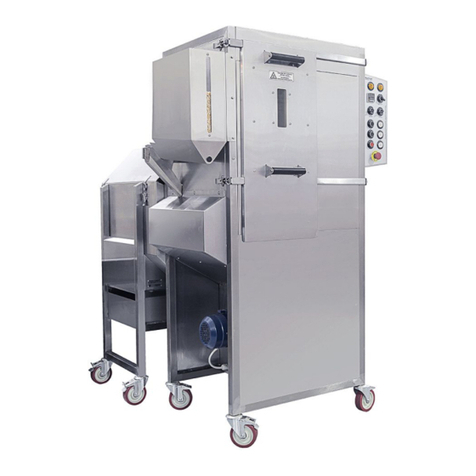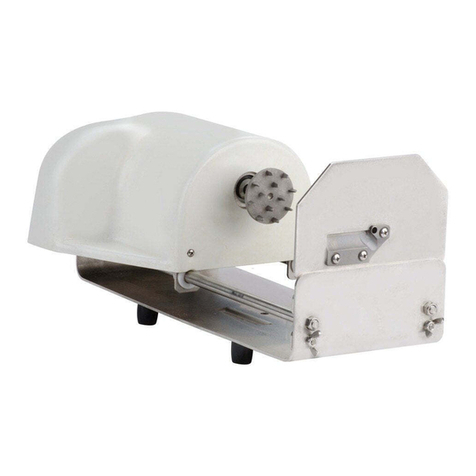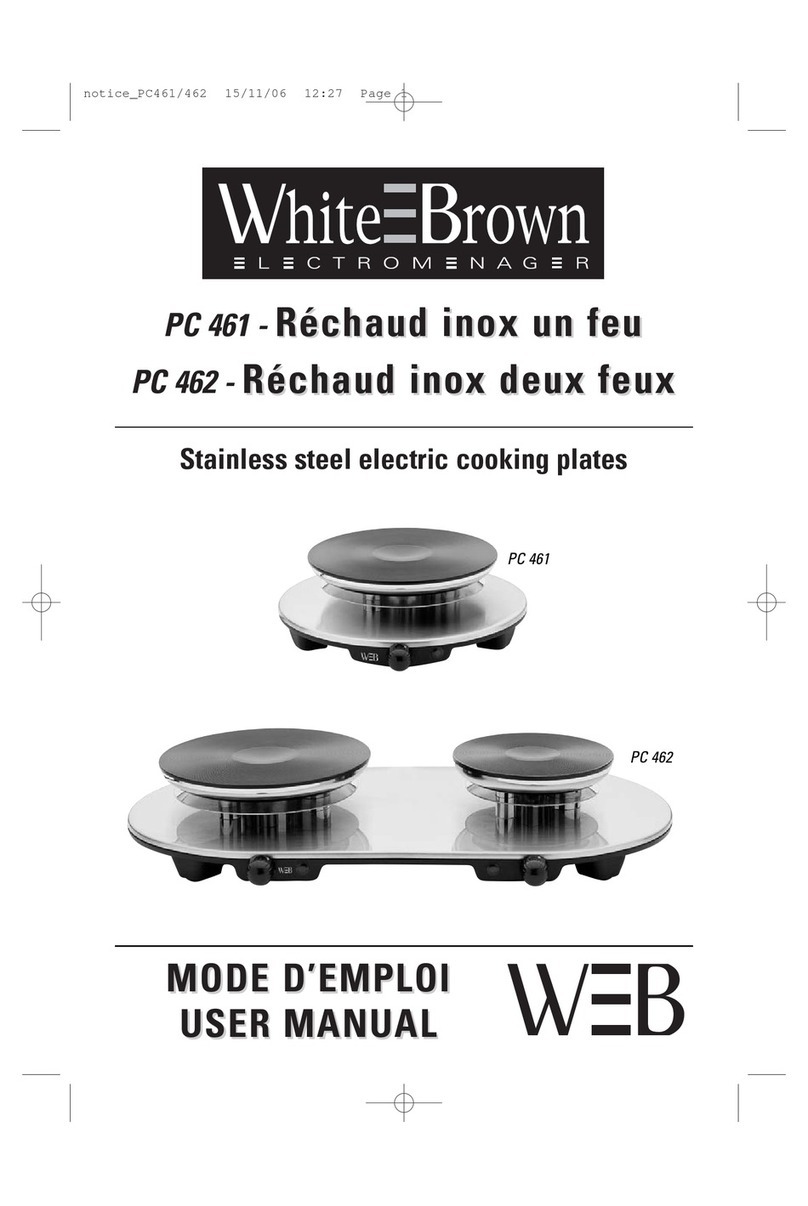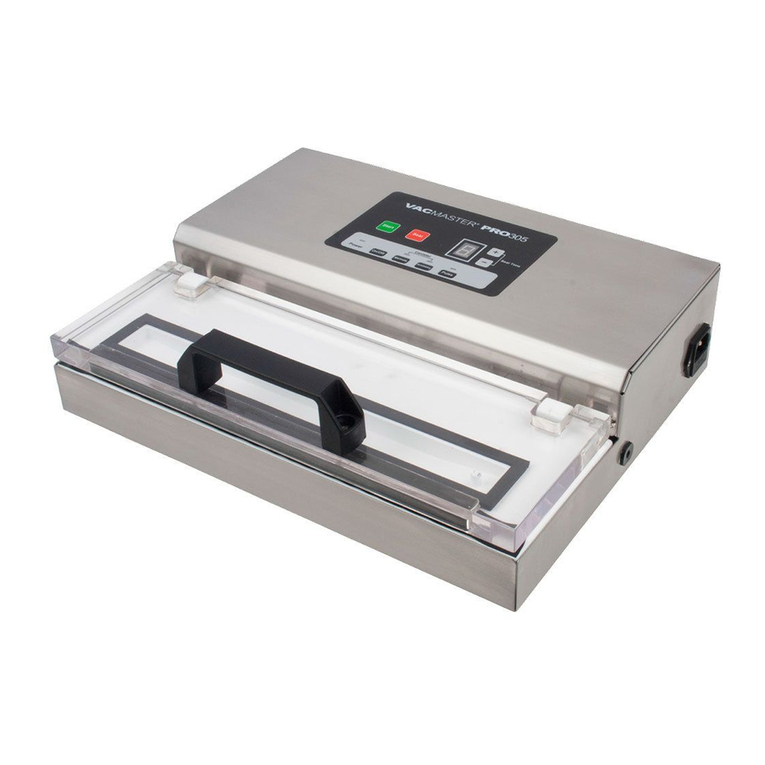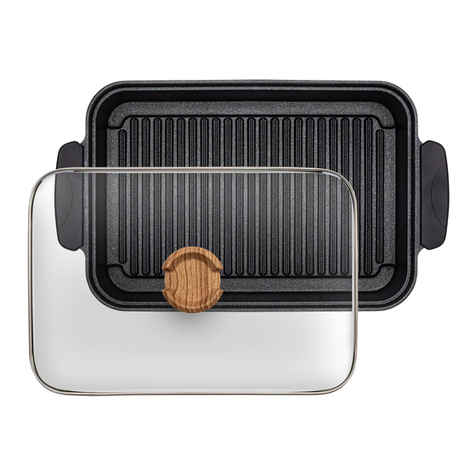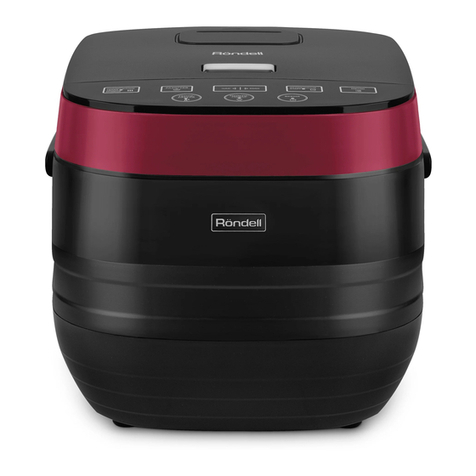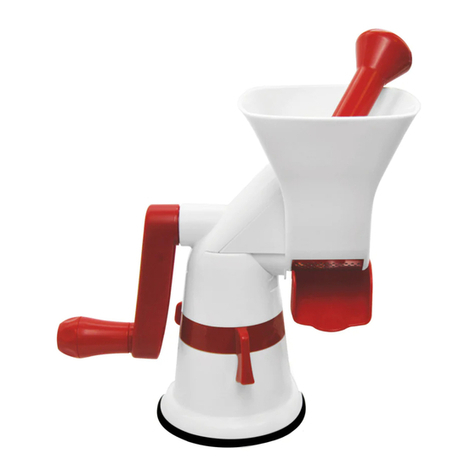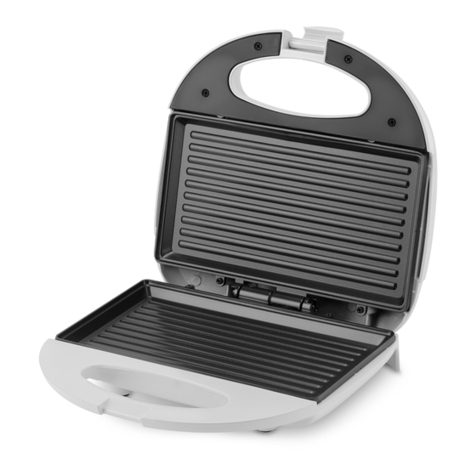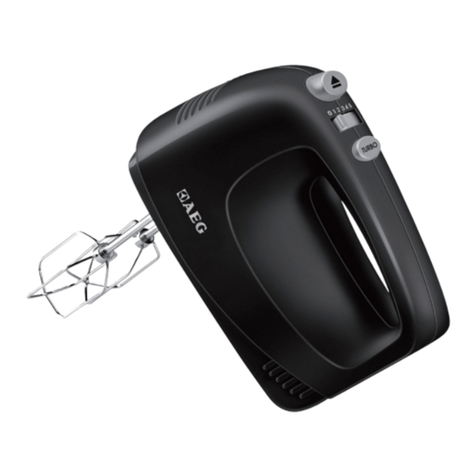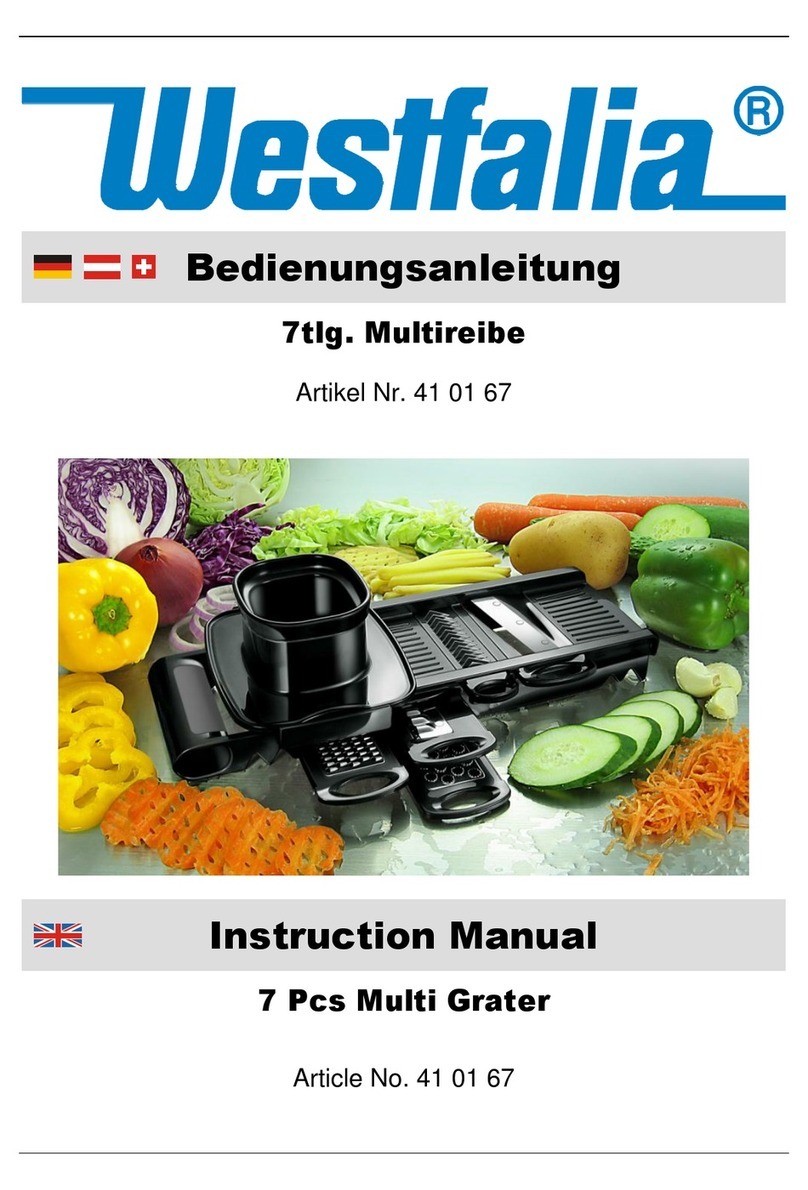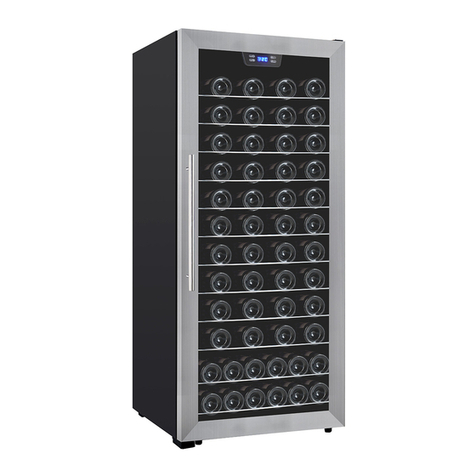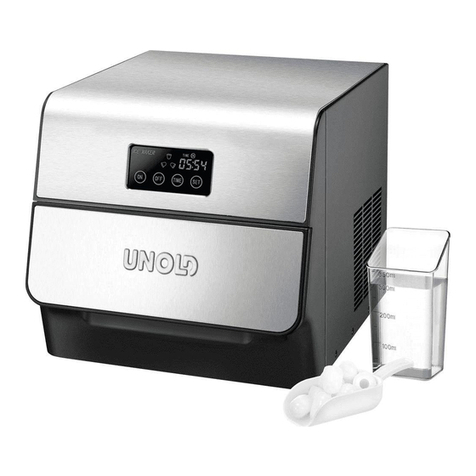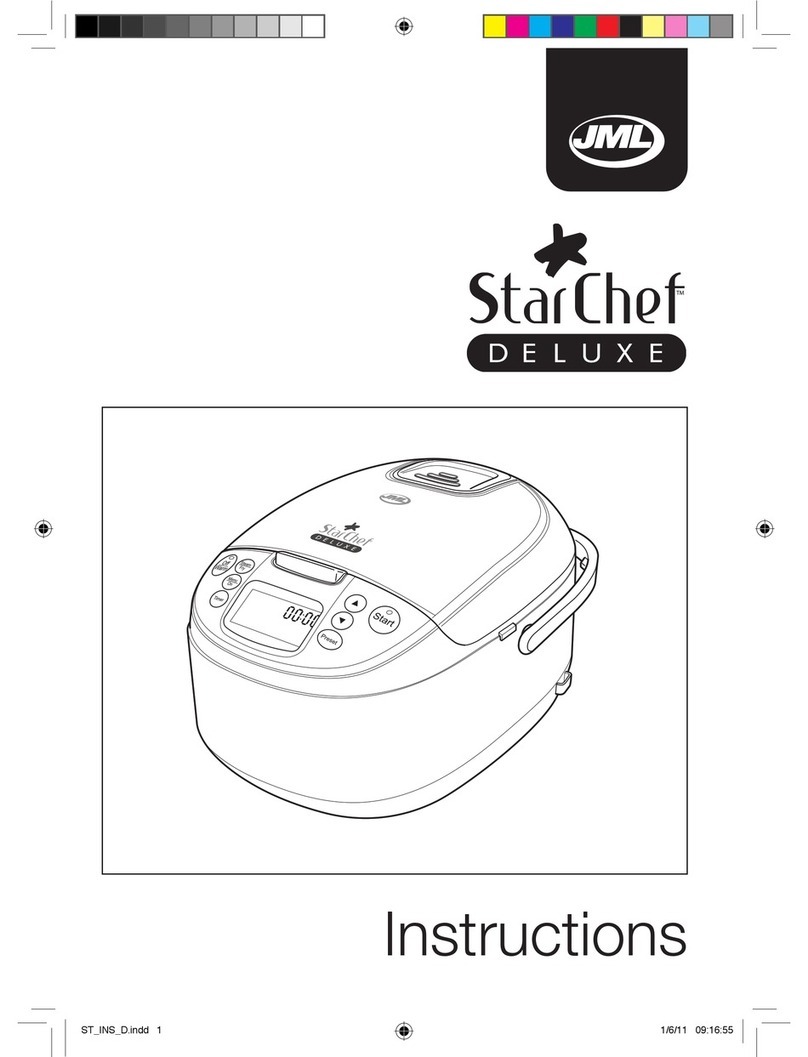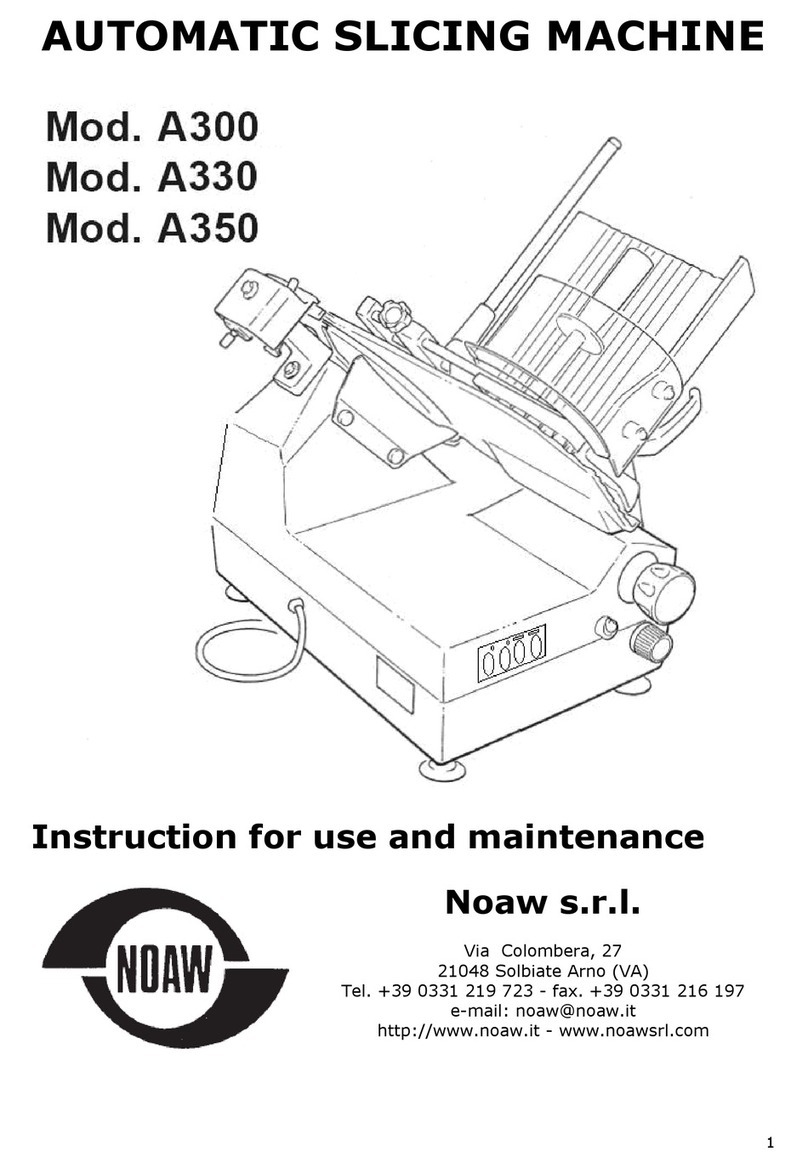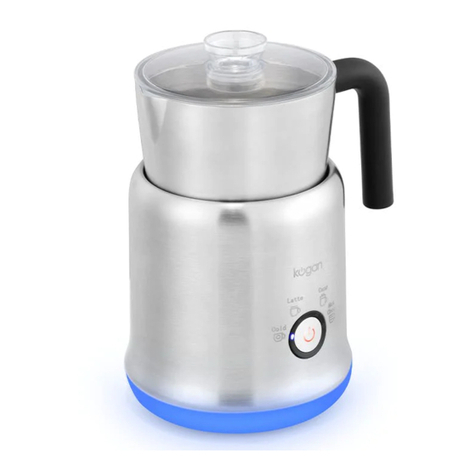RoboLabs ROBOJETFLOSS ACB-09-120 User manual


COTTON CANDY MACHINE ACB-09-120 rev 11-May-18
OPERATION MANUAL
COTTON CANDY MACHINES
ROBOJETFLOSS (ACB-09-120)
ROBOJETFLOSS PRO (ACB-09-120-PRO)
ROBOJETFLOSS RENT (ACB-09-120-R)
2018
2

COTTON CANDY MACHINE ACB-09-120 rev 11-May-18
SAFETY REQUIREMENTS
Read the ENTIRE MANUAL before operating.
Only allow TRAINED PERSONNEL to operate the Robo JetFloss.
1. DO NOT TURN ON until transport fastening nuts are fully RAISED.
2. DO NOT OVERFILL spinning head with flossugar.
3. WEAR eye protection during operation.
4. DO NOT TOUCH head while it is still rotating.
5. Spinning head remains HOT after use - DO NOT TOUCH until cool.
6. Avoid OVERHEATING, motor should rest 15 min. per hour of operation.
7. Do not MODIFY the design of the machine.
8. UNPLUG the power cord before cleaning or servicing.
In accordance to EN 60335-1:2012 standard the machine can be used by
children aged 8 years and above and persons with reduced physical,
sensory or mental capabilities or lack of experience and knowledge if they
have been given supervision or instruction concerning use of the appliance
in a safe way and understand the hazards involved. Children shall not play
with the appliance. Cleaning and user maintenance shall not be made by
children without supervision.
3

COTTON CANDY MACHINE ACB-09-120 rev 11-May-18
1. OVERVIEW AND OPERATION
1.1. DESIGNATION
ACB-09-120 is intended to produce cotton candy using sugar with or
without flossine. Due to the patented design, the equipment allows
operation under high ambient temperature and relative humidity. Candy
floss leaves the machine vertically, producing servings up to 6 feet in
diameter. With practice, you can move up to 16 feet away from the
machine and continue to make candy as the stream will follow you in a
continuous trail!
1.2. TECHNICAL SPECIFICATIONS
MODEL ROBOJETFLOSS
ACB-09-120 ROBOJETFLOSS PRO
ACB-09-120-PRO ROBOJETFLOSS RENT
ACB-09-120-R
Productivity up to 11 lbs/hr up to 11 lbs/hr up to 11 lbs/hr
‘Cold start’ time 60 sec 20 sec 60 sec
Spinning rate 3300 rpm 3300 rpm 3300 rpm
Rated current, not more 16 A 16 A 12 A
Rated voltage 120V/60Hz 120V/60Hz 120V/60Hz
Dimensions (machine only) 15x16x15 in 15x16x15 in 15x16x15 in
Dimensions (pan included) 26x26x19 in 26x26x19 in 26x26x19 in
Weight, not more 33 lbs 33 lbs 33 lbs
The RoboJetFloss will produce results at ambient temperatures up to
104°F (41°C) with relative humidity no greater than 50%. As relative
humidity increases the maximum operating temperature decreases. For
example, with a RH of 90% the maximum recommended temperature
decreases to 68°F.
As temperature and humidity increase above these ranges, cotton candy
can still be produced, but it will be very dense and heavy. Most importantly,
being a sugar product, it may begin to melt shortly after being production.
Altitude above sea level should not exceed 3280 ft.
Ingress protection rating IP20 (IEC 60529).
4

COTTON CANDY MACHINE ACB-09-120 rev 11-May-18
1.3. DELIVERY SET
Delivery set of ACB-09-120 includes the following:
Cotton candy machine 1 pc
Plastic/aluminum floss pan11 pc
‘No-Snow’ tool 1 pc
Silicone sealing collar 1 pc
Silicone adjustment ring 2 pcs
Power supply cord 1 pc
Operation manual 1 copy
THE FLOSS PAN IS AN INTEGRAL PART OF THE MACHINE AND MUST
BE INSTALLED FOR SAFE OPERATION!
Plastic/aluminum floss pan dimensions are 27” x 27” x 10” with net weight
of 3.3 and 4.4 lbs respectively.
1.4. MACHINE DESIGN AND OPERATION PRINCIPLE
The RoboJetFloss includes the following main components: Housing (1);
Chassis (2) with electric motor and Spinning Head (3). The spinning head
and electric motor are mounted on the chassis, which itself is connected to
the housing by four spring-mounted supports. These spring supports
dampen vibrations and allow the motor to self-balance during operation.
1ACB-09-120-R machine delivery set includes aluminum pan
5


COTTON CANDY MACHINE ACB-09-120 rev 11-May-18
The front panel has the following controls: Switch (11) turns on the electric
motor which rotates the spinning head; Switch (12) turns on the heating
element; Adjustment Knob (13) regulates power to the heating element and
thus controls its temperature; Voltmeter (14) indicates actual voltage
supplied to the heating element.
The ‘PRO’ version includes a ‘Quick Start’ button (15) which temporarily
sends maximum power to the heating element, even when the electric
motor is not running.
See the figure above for ACB-09-120 front panel. Appearance may vary
depending on your specific model.
7

COTTON CANDY MACHINE ACB-09-120 rev 11-May-18
2. INTENDED USE
2.1. PROTECTORS AND LOCKUPS
Four nuts secure the spring-loaded chassis during transportation to prevent
damage to the motor. They are located on the threaded support studs at
each corner of the deck.
Rubber legs and a spring suspension supports the chassis in order to
minimize vibration and allow the spinning floss head to balance itself at
high speed.
The stator prevents operators and objects from coming into contact with the
rapidly rotating impeller.
There is a 16A circuit breaker provided for short circuit protection.
2.2. PREMISES REQUIREMENTS
The equipment may be operated in temperatures ranging from +41° F to
+104° F with relative humidity not exceeding 50% at 104° F.
2.3. RAW MATERIAL REQUIREMENTS
Use only 100% pure sugar (beet or cane) with flossine or ready to use
flossugar. Do not use sugars with starch, dextrose or similar additives as
they can result in poor quality floss and/or clog the heater coil assembly.
2.4. GETTING STARTED
Unpack machine and save packaging for future shipping.
Put the machine on a stable table or cart.
Before attaching power cord, fully raise all four transportation fastening
nuts (16) until they reach the rubber floss pan supports.
8




COTTON CANDY MACHINE ACB-09-120 rev 11-May-18
‘Cold start’ Procedure
When the Robo JetFloss has been off for more than 15 minutes, it will take
at least 60 seconds before the heating coil has warmed enough for the
production of cotton candy to begin. If the machine has only been off for a
brief time, such as to add more flossugar, this time will be reduced
substantially.
Users of the ‘Pro’ version can press and hold the ‘Quick start’ button (15)
for 10 - 15 seconds. This will send full power to the heating element and
can be done whether the main power switch is on or not. This will
substantially reduce the time required to begin candy production.
Owners of the standard version can achieve a similar result by manually
adjusting the voltage regulator. After switching on both the motor (11) and
heating element (12), an experienced operator can adjust the voltage
regulator to the maximum (13). But, again for only 10 – 15 seconds, and
then decreasing the voltage back to the recommended operating range
between 70-80 V and proceeding as normal from there.
However, in neither case above should maximum voltage be applied for
more than 10 -15 seconds as you risk overheating the element and burning
12

COTTON CANDY MACHINE ACB-09-120 rev 11-May-18
the flossugar. Doing so could result in overheating the flossugar and the
the cotton candy would then be produced in a narrow rope that is difficult to
capture. In an extreme scenario, the floss would be burnt and ejected as
irregular flakes and sugar dust that would create a mess covering
everything nearby in the immediate area.
The figure below shows an example of mildly overheated heating element.
Notice the cotton candy is rising more like a ‘rope’ than a wide “sleeve.”
Keep in mind that once the heating element and sidewall have reached
such a high temperature, reducing the voltage will not immediately produce
the desired effect. Due to thermal lag, any changes in voltage will only
slowly take effect over the next 15 to 30 seconds (or longer, depending on
ambient temperatures) so it is very important to avoid overheating the
element in the first place.
‘No-Snow’ Tool
In the production of cotton candy, “snow” includes flakes, flecks, small
filaments and sugar dust that are all too small to be collected in the normal
winding process of producing a cotton candy serving.
There are four situations when “snow” will be emitted from the spinning
head:
13

COTTON CANDY MACHINE ACB-09-120 rev 11-May-18
1. At the very beginning of operation.
2. During the end of production.
3. When there there is not enough flossugar remaining.
4. If the coil and sidewall are overheated.
In both the beginning and ending of operation, snow is produced as the
heating element crosses the temperature threshold at which it can evenly
and uniformly melt the flossugar in the bowl into quality cotton candy floss.
The same is true when there is not enough flossugar left in the head
because the remaining sugar will not be evenly distributed and that will
cause some of the material to overheat. Keeping the floss head at least 1/3
full at all times will prevent this from occurring.
Finally, if the coil and sidewall become extremely overheated then brunt
sugar flecks and dust will be produced instead. Paying attention to Voltage
regulation and not excessively preheating the coil during cold startup will
ensure this does not happen.
Regardless of the cause, you can prevent the distribution of snow (which
can create a mess) by placing the ‘No-Snow’ tool (26) over the spinning
head, where it will capture the snow as it is ejected.
However, you should not leave the ‘No-Snow’ tool in place for long periods
of time as it will eventually become filled with floss and this will then collect
on the spinning head itself.
To help prevent this, the inside of the “No Snow” tool should be wiped off in
between each use to prevent accumulation of spent flossugar.
14



COTTON CANDY MACHINE ACB-09-120 rev 11-May-18
stick, you will find that you can modify the shape of the snake.
Once you have the hang of it, you will be able to step away from the
machine, as far as 10' to 15' (depending on conditions) and the snake will
follow you if you continue the proper winding rate.
You can find more information at www.flyingcottoncandy.com
Shutting Down
When shutting down for periods of less than 24 hours, you may leave any
remaining flossugar in the spinning head.
Turn off power to the heating element switch (12) and capture the
remaining cotton candy as the head cools down. When the coil cools to the
point that “snow” is produced, then cover the head with the “No Snow” tool
and allow the head spin for 5-7 minutes to fully cool down before turning off
the main power switch (11).
Once cool to the touch, wipe out the inside of the “No Snow” tool, and put it
back over the spinning head for protection. You can also cover this with a
paper or plastic bag to protect the flossugar from dust, debris and insects.
The machine and Floss Pan should be wiped down with a damn cloth to
remove excess flossugar as needed.
17

COTTON CANDY MACHINE ACB-09-120 rev 11-May-18
If you are shutting down for longer than one day, then you should perform a
complete cleaning of the spinning head as described in the Technical
Maintenance section below.
Do not leave unused flossugar in the spinning head for more than a day or
two as it can harden/caramelize and effect the balance of the head during
future sessions, which could ultimately result in failure of the machine.
During transportation always secure the chassis using the transportation
lock-down nuts. This will prevent possible damage of the machine and
prolong the lifetime.
18

COTTON CANDY MACHINE ACB-09-120 rev 11-May-18
3. TECHNICAL MAINTENANCE
3.1. GENERAL INSTRUCTIONS
ATTENTION! THIS PART OF OPERATION MANUAL IS INTENDED ONLY FOR
TRAINED PERSONNEL EXPERIENCED WITH ELECTRICAL EQUIPMENT.
The purpose of technical maintenance is extend the working life of the
machine while fulfilling all safety requirements.
The following schedule3is recommended:
PROCEDURE PERIOD
Cleaning machine and pan surfaces removing
sugar and cotton candy Once a day
Sidewall and heater cleaning Twice a month
Brush unit maintenance Every 6 months
3.2. SAFETY MEASURES
DO NOT CLEAN THE SPINNING HEAD OR COMPONENTS WITH SHARP
OR METAL PARTS. HOT WATER, A SPONGE OR SOFT BRISTLE BRUSH
IS ALL THAT IS REQUIRED OR PERMITTED!
DISCONNECT THE POWERSUPPLY BEFORE CLEANING OR PERFORMING
TECHNICAL MAINTENANCE!
3Technical maintenance may be required sooner if individual parts become fouled prior to
scheduled service.
19

This manual suits for next models
2
Table of contents
Other RoboLabs Kitchen Appliance manuals
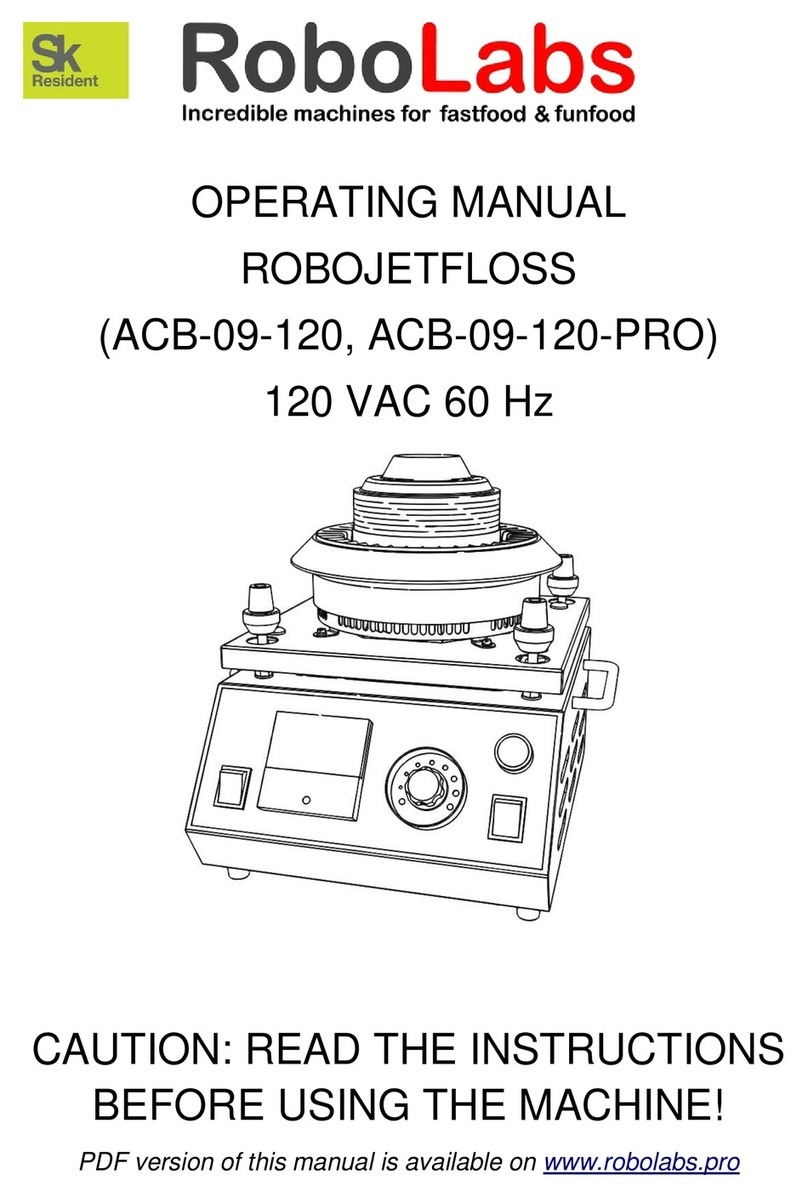
RoboLabs
RoboLabs ROBOJETFLOSS User manual

RoboLabs
RoboLabs ROBOMIX MINI User manual
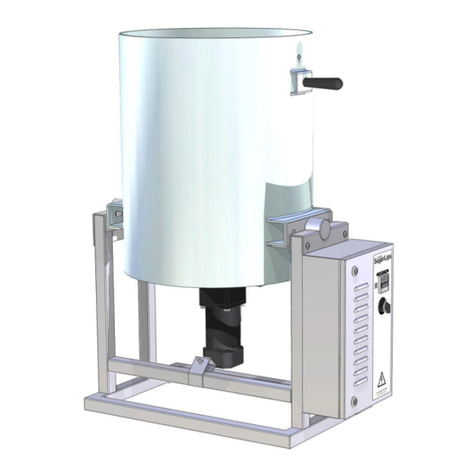
RoboLabs
RoboLabs SUGARLIPS 20 User manual
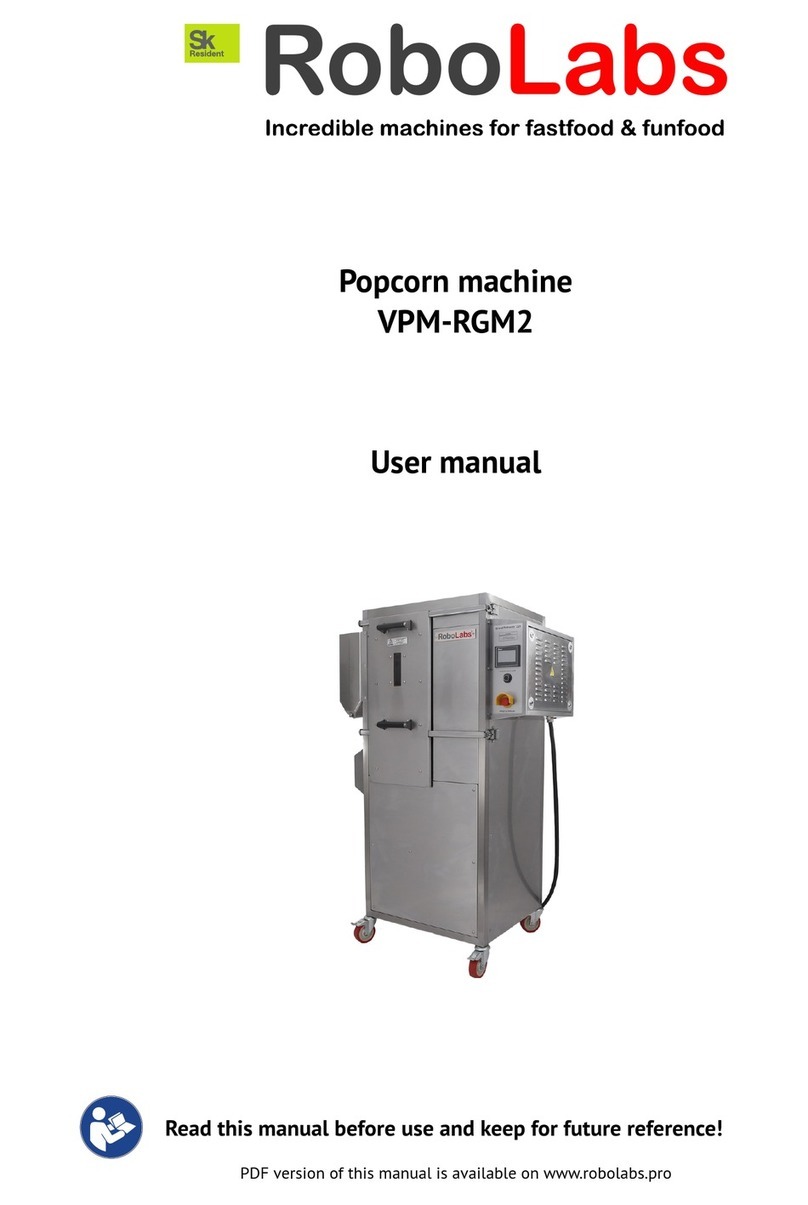
RoboLabs
RoboLabs VPM-RGM2 User manual
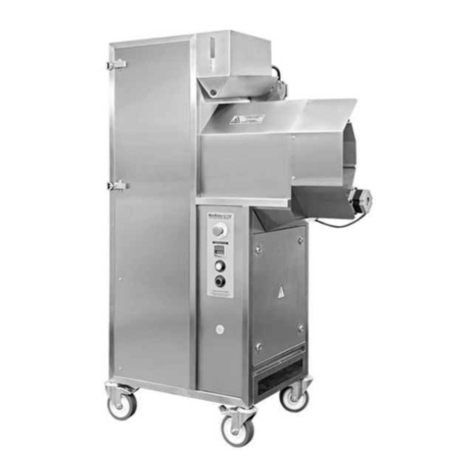
RoboLabs
RoboLabs MINI ROBOPOP 25 User manual

RoboLabs
RoboLabs ROBOJETFLOSS User manual
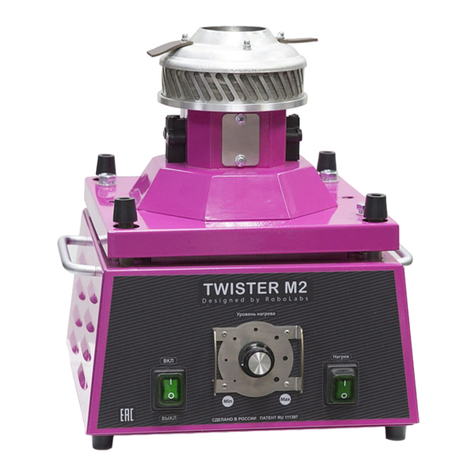
RoboLabs
RoboLabs TWISTER-M2 User manual
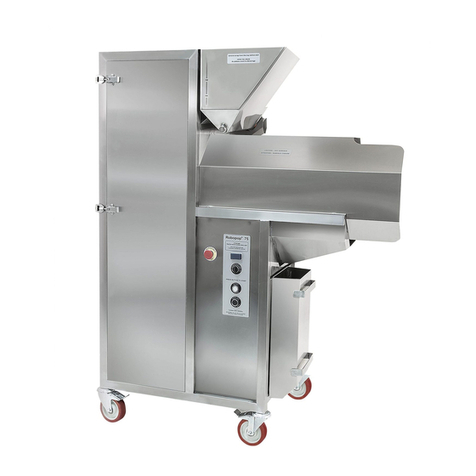
RoboLabs
RoboLabs Robopop 75 User manual

RoboLabs
RoboLabs ROBOPOP 60 User manual
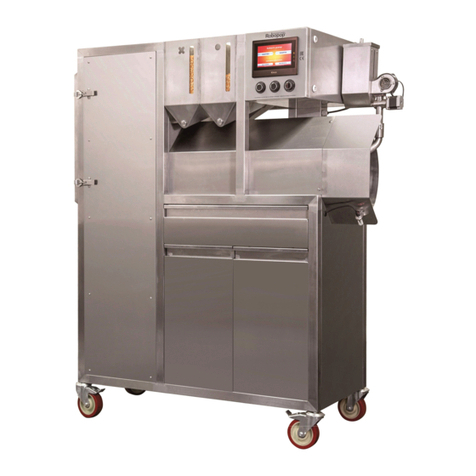
RoboLabs
RoboLabs Vortex Popcorn Robopop 60 Operating manual
